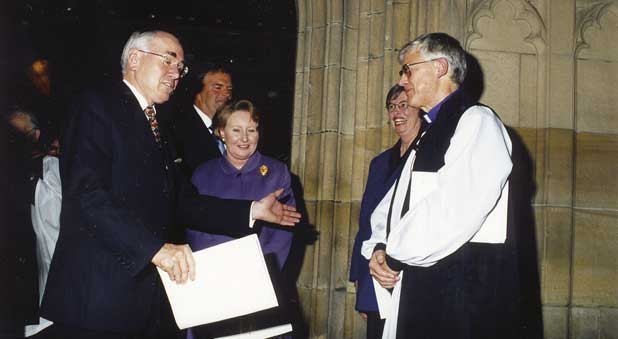No, it’s not the Federal election. While it may not be an issue on the radar of most people in the Diocese, in just a few months Archbishop Peter Jensen will retire, which means an election for his replacement is not far away.
Most members of our churches will only know of this election through what is reported in their church or in the press, but their Synod representatives – their rector and two lay people – will be the ones voting for the 12th Archbishop of Sydney in August.
Estimates are that between 30 and 50 per cent of the members of Synod have changed since Dr Jensen was elected in 2001. That being the case, the Bishop of South Sydney, Robert Forsyth, who becomes Administrator of the Diocese once Archbishop Jensen retires on July 11, says it’s important for all members to be informed about what will happen in the coming months so they are ready to take part in the process of nominating, considering candidates, and understanding what will be expected of them as voters at the election Synod.
“[An archbishop’s election] happens so rarely that most people don’t know what’s going to happen and we want all Synod people, not just a few, to be empowered and comfortable with it,” he says. “It’s one of the most important meetings of Synod, to elect a new archbishop, so it’s important that we do it very well.”
The summons to the election Synod and other material will be sent to members this month (see box), with more information to follow as events unfold.
“The information will only be sent to Synod members because they’re the ones who make the decisions,” Bishop Forsyth says. “We want them to understand what’s involved so they feel free to engage with the process.”
One important element of the election Synod that he wants to prepare people for is the manner of voting. In the annual Synod meeting votes are taken almost always by the group as a whole. In an election Synod, the normal process is to split into houses of clergy and laity, or lay people.
“There are a series of votes,” Bishop Forsyth explains. “In the first, candidates are moved from the ‘nomination’ list to the ‘select’ list, and they require a majority in either the house of clergy or laity. To move from the select list to the ‘final’ list they need a majority in both houses, so the bar gets raised higher every time.
And if there’s more than one candidate on the final list, more discussion and voting takes place.
“Most importantly all of us in this great diocese should make prayer our priority for a shepherd after God’s own heart, who will walk in his ways and with loving care watch over his people, that his name be glorified.”
Important dates
- February 25 – Standing Committee declared that the office of the Archbishop of Sydney would become vacant on July 11, 2013 and needed to be filled.
- March 18 – all Synod members should have received a written summons to the election Synod from Archbishop Jensen by this date, with details of where (and to whom) nominations for Archbishop should be sent.
- June 24 – closing date for nomination of candidates.
- July 11 – Archbishop Peter Jensen retires.
- July 15 – closing date for a candidate’s name to be withdrawn from the list of nominees.
- July 26 – by this date all Synod members should have received an alphabetical list of all nominees, showing who has nominated them plus any information relating to them in the National Register.
- August 5 – Election Synod begins.
Image: Consecration 2001 - Then Prime Minister John Howard congratulates Archbishop Peter Jensen























